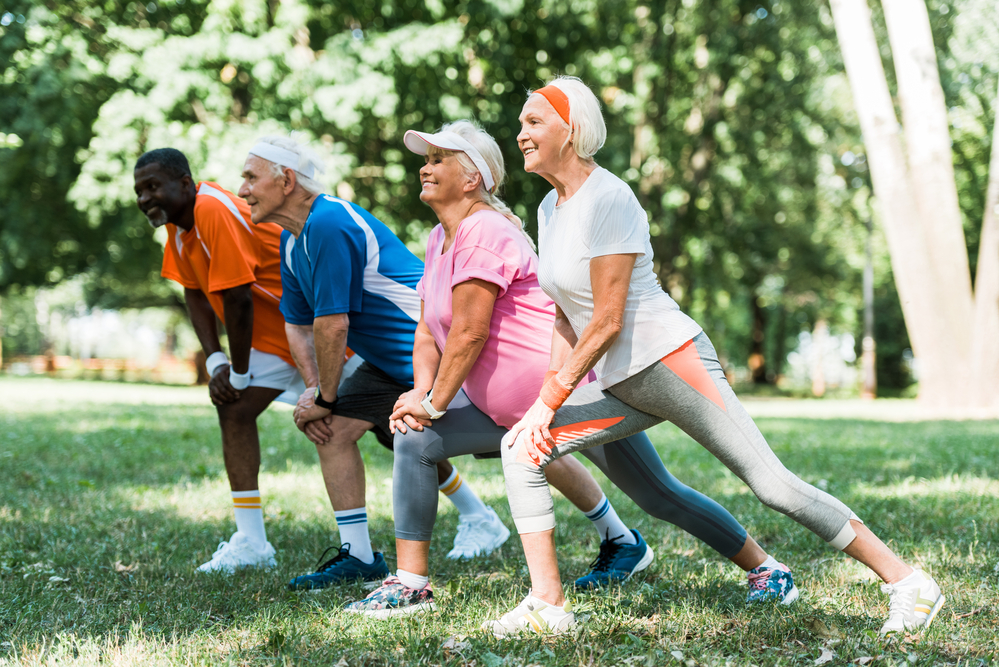The Vital Role of a Speech Therapist in Treating Communication and Swallowing Disorders
November 6, 2023
Balance and Strength Training for Seniors: A Comprehensive Guide to Physical Therapy
January 11, 2024Living with osteoporosis can be challenging, especially for seniors who are already dealing with various age-related health issues. However, with the right approach, individuals can effectively cope with this condition and maintain a good quality of life. In this blog, we will explore the essential role that exercise and physical therapy play in promoting senior health and managing osteoporosis.
Osteoporosis: A Common Concern Among Seniors
As we age, our bones tend to become weaker, increasing the risk of osteoporosis. This condition is characterized by low bone density, making bones more prone to fractures. Osteoporosis often goes undetected until a fracture occurs, leading to pain, mobility issues, and a diminished quality of life. However, there are several measures seniors can take to effectively cope with this condition, and one of the most important ones is regular exercise.
The Role of Exercise in Managing Osteoporosis
Regular exercise is crucial for individuals with osteoporosis as it helps strengthen bones, improve balance, and reduce falls. Weight-bearing exercises, such as walking, jogging, and dancing, are particularly beneficial for maintaining bone density. These exercises subject the bones to impact or stress, stimulating them to become stronger and denser over time. Additionally, resistance exercises, such as weightlifting, can help build muscle strength, further supporting bone health.
Physical Therapy: A Personalized Approach
For seniors with osteoporosis, it is essential to approach exercise under the guidance of a professional. Physical therapy offers a personalized approach tailored to an individual’s specific needs and capabilities. A physical therapist can assess the individual’s condition, identify any areas of weakness or imbalance, and develop a customized exercise plan. This plan may include a combination of weight-bearing exercises, strength training, balance exercises, and flexibility training to address the specific needs of the individual.
The Benefits of Exercise for Senior Health
Regular exercise offers numerous benefits beyond managing osteoporosis:
- Improved balance and coordination: Exercise can help seniors enhance their balance, reducing the risk of falls and subsequent fractures.
- Increased muscle strength: Strengthening muscles can provide better support to the bones, improving overall mobility and reducing the risk of fractures.
- Enhanced overall health: Exercise promotes cardiovascular health, boosts mood, and helps maintain a healthy weight, which all contribute to a better quality of life.
Incorporating Exercise into the Routine
Starting an exercise routine may seem daunting for seniors with osteoporosis. However, taking small and gradual steps can make a significant difference. Here are some practical tips to incorporate exercise into daily routine:
- Consult a healthcare professional: Before starting any exercise program, it is vital to consult with a healthcare professional or a physical therapist. They can provide guidance and customize an exercise plan based on individual needs and abilities.
- Begin with gentle exercises: For seniors who haven’t been active, it is advisable to start with gentle exercises, such as walking or water aerobics. Gradually increase the intensity and duration as strength and stamina improve.
- Focus on correct form: Proper form is essential to prevent injuries. Seniors should pay attention to their posture, body alignment, and breathing techniques during exercises.
- Stay consistent: Consistency is key for reaping the benefits of exercise. Seniors should aim to engage in physical activity on a regular basis, even if it’s just for a few minutes each day.
Creating a Safe Environment
Safety should always be a top priority when it comes to exercising with osteoporosis. Here are some guidelines for creating a safe exercise environment:
- Clear the exercise area of any tripping hazards, such as rugs or cords.
- Use appropriate footwear that provides support and stability.
- Make sure the exercise space is well-lit to avoid accidental falls.
- Have a support system in place, such as handrails or a sturdy chair, to provide stability during exercises.
Final Thoughts:
Coping with osteoporosis is possible with exercise and physical therapy. By incorporating regular exercise into their routine, seniors can strengthen their bones, improve balance, and reduce the risk of fractures. With the guidance of a physical therapist, individuals can personalize their exercise plan to meet their specific needs. Remember, Maplewood Sauk Prairie Health & Rehabilitation Center provides exceptional senior living options where individuals can receive the care and support necessary to manage osteoporosis effectively. Take charge of your health and embrace the power of exercise in coping with osteoporosis!
References:
https://www.betterhealth.vic.gov.au/


